Our hives are situated in and around Fleet, Hampshire, UK. The honeybees forage for nectar up to 1 miles from the hives on average, but could fly anything up to 5 miles looking for a good source. When the honey is ready it is bottled via several steps.
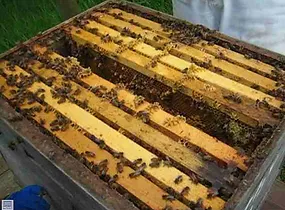
STEP 1
A “Clearer Board” (a sort of one-way door) is placed between the honey and the main hive box (the brood chamber). After about 24 hrs most of the bees have left for the brood chamber and can’t return.
Then we can remove the Supers and take them home without bringing a box full of bees along for the ride!
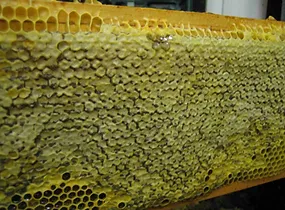
STEP 2
Each comb is removed from the Supers (the top boxes of a hive) and the cappings (the little wax lids on each cell) removed with a knife or a heat gun.
The cappings are later melted down and filtered along with other wax. We can then use the wax to make products such as candles etc, or recycle it back into foundation.
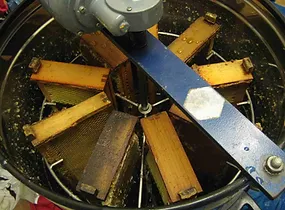
STEP 3
The combs are placed into a spinner. As long as you keep the lid on (unlike in the picture!) the honey runs down to the bottom of the spinner ready for course filtering.
Sometimes the honey has “set” in the honey comb. In this case, instead of spinning the honey out, we have to melt the wax and honey.
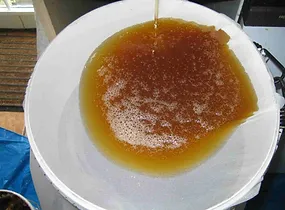
STEP 4
Inevitably quite a lot of wax debris falls into the honey as the frames are spun, so the honey is decanted into containers ready for filtering.
If the weather is cool, the honey is warmed gently so that it flows easily. The honey is then passed through a course and fine filter to remove any debris.
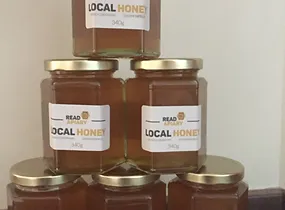
STEP 5
Finally the honey is decanted straight from container to jar – that’s it. Your jar of Read Apiary honey really is straight from a local hive.
As long as you keep the lid on to stop moisture getting in, your jar of honey will keep for a long time. Occasionally the honey will crystallise (turn semi-hard). If this happens simply stand the jar in a bowl of hot water and the honey will return to its liquid state.
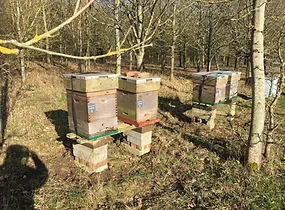
STEP 6
We’re not quite done though. The now empty wax frames are taken back to the bees, who do a very thorough job at cleaning the honey comb and removing the remaining honey.
In a few days the frames will be clean and dry, and ready to be removed again for storage in a dry shed ready for next year.

